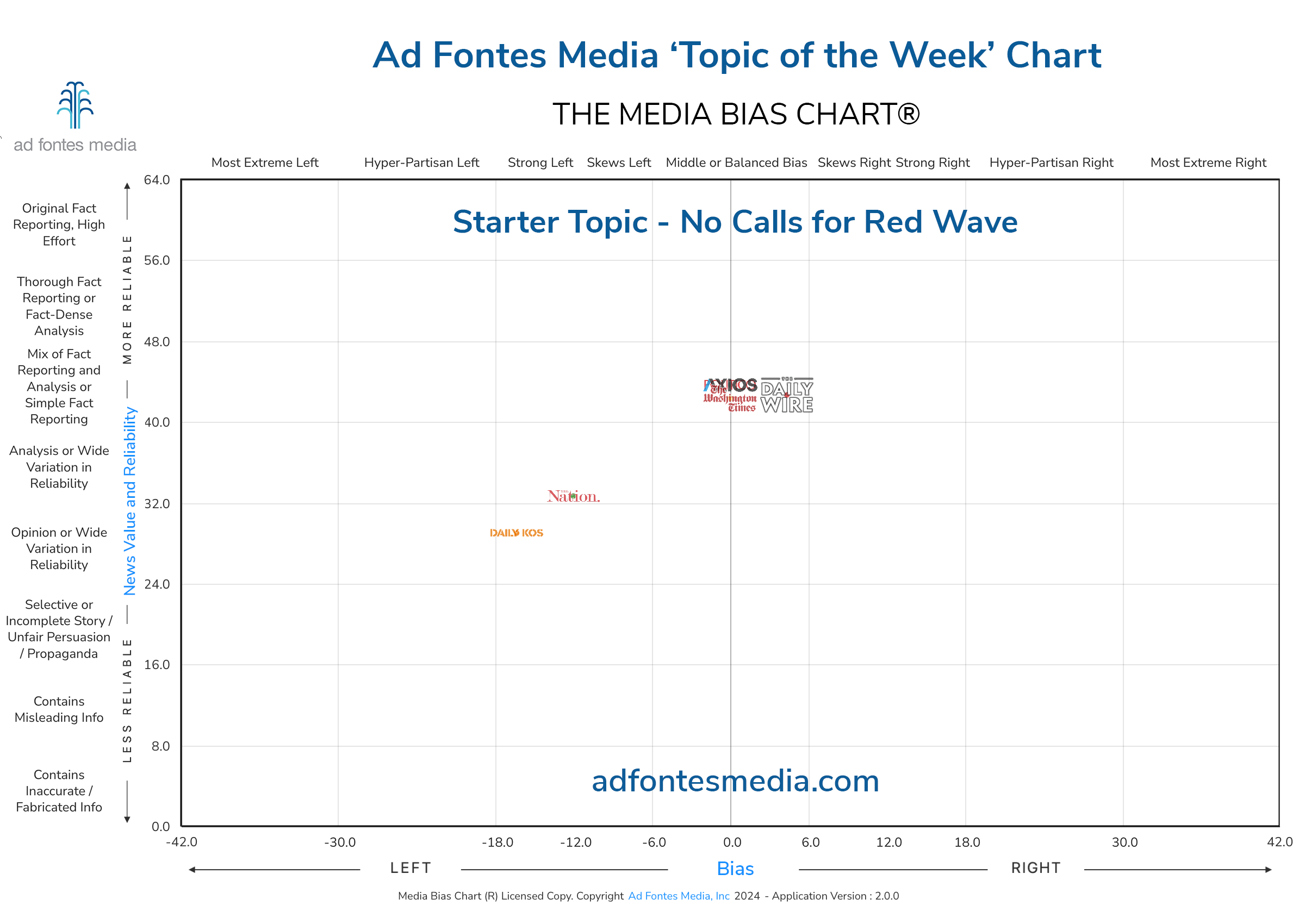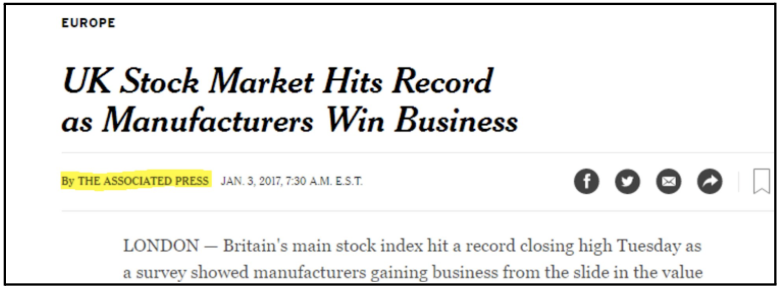Menu

No Red Wave Predicted for November
The Media Bias Chart takes a look at articles covering the changing Republican sentiment about how many seats they expect to win in the November elections
Author:
Sara Webb
Date:
05/10/2024
During the midterm elections in November 2022, Senate GOP campaign chief Steve Daines boldly predicted a 55-seat majority, but the GOP fell well short. This year, Daines has stated: “A lot of these races are on the margin. They’re razor-thin races. It is going to be a night that things can go either way in many of these states. But 51 is our goal, and you will not hear me from now until Nov. 5 say anything but 51.”
Fifty-one seats would give Republicans a thin majority in the Senate, but liberal news outlets reported vociferously that this prediction is unlikely, while conservative outlets seemed to avoid analyzing it at all. Our team examined media coverage of this issue in this week’s Topic of the Week.
Each week, Ad Fontes Media chooses a widely covered trending news topic to share insight into how our analysts rank news coverage for the Media Bias Chart®. To do this, we select six articles reporting on the same story from different outlets to show how each treated the subject.
Once we choose a set of articles, pods of analysts with diverse political perspectives (one right leaning, one center, and one left leaning) read each article and use Ad Fontes Media’s content analysis methodology to determine its bias and reliability. These ratings inform the articles’ placement on that week’s special Media Bias Chart®.
Our analyst team examined several articles about the lack of red wave sentiment from various media outlets last week: “Senate GOP zeros in on 4 top races in 2024” from Axios, “Senate GOP campaign chief echoes McConnell, downplays red wave expectations” from Politico, “Republican Senators Are a Bigger Threat to the Constitution Than Trump” from The Nation, “Mitch McConnell will stop at nothing to regain Senate majority” from Daily Kos, “McConnell Reveals ‘The Single Most Important Thing’ He’s Focused On” from Daily Wire, and “McConnell says his main goal is securing a Republican majority in the Senate” from Washington Times.
While the bias and reliability scores for each of these articles can be found on our Topic of the Week page, we are going to take a closer look at articles from Washington Times and Daily Wire.
Washington Times is a daily newspaper published in Washington, D.C. Established in 1982 by Unification movement leader Sun Myung Moon, it is now owned by Operations Holdings Inc., a subsidiary of Holy Spirit Association for the Unification of World Christianity. The aggregated bias and reliability scores from all of the articles rated from this source are 11.88 (skews right) and 36.05 (analysis or wide variation in reliability). This week’s article scored 0 for bias (middle or balanced) and 42.33 for reliability (mix of fact reporting and analysis).
Daily Wire is a news and opinion website created in 2015 for “a new generation of conservatives.” Founded by political commentator Ben Shapiro and Jeremy Boreing, it is owned by Bentkey Ventures and is based in Nashville, Tennessee. The aggregated score for bias is 12.84 (strong right) and for reliability is 32.21 (analysis or wide variation in reliability). This week’s article scored 4.33 for bias (middle or balanced) and 42.67 for reliability (mix of fact reporting and analysis).
Why did two right-leaning publications receive center bias scores this week? Let’s take a closer look.
This can happen if a news outlet publishes a syndicated article, like one from the Associated Press (AP), though it is normally indicated in the byline:
In this instance, the article would share the same bias and reliability ratings as its original source (AP), and sometimes that skews the rating of the source that reprinted the article.
That is not the case here, however. The Washington Times article was written by staff reporter Mallory Wilson, and the credit for the Daily Wire story is “Daily Wire News,” indicating that perhaps several people worked on the article.
So why are these two normally right-leaning outlets publishing stories with a “middle or balanced” bias? Sources on both sides of the political spectrum sometimes leave out facts in a story or choose not to report a particular issue if it doesn’t fit the narrative of their political side. One of the metrics that our analysts consider when rating an article is what it is missing. Did a story neglect to mention an important fact or viewpoint that was widely reported by other media outlets? In both of these cases, yes, that is true.
The fact that the predicted “red wave” of Republicans winning seats in the House and Senate just two years ago has been tamped down to aiming for securing the narrowest of majority margins is telling a story that neither of these outlets are reporting. Zero bias? Yes. Telling an entirely unbiased story? No. The decision to downplay the diminishing red wave when these sources would normally be whipping their readers into a partisan frenzy is biased in itself.
The source pages of the Daily Wire and Washington Times show data just for those sources. If you scroll down, you can see a chart of individual content sample scores that list the bias and reliability scores of recently rated articles. Take a look and pay attention to the bias scores that are -6 to 6, the range that we classify as “middle or balanced.” What do you think? Is it truly unbiased, or do the articles purposely leave out important details?
These are just two examples of the tens of thousands of articles our analysts have rated for reliability and bias. If you want a look at the larger media landscape or are curious to see how our analysts have rated your favorite sources, head on over to our website and check out the resources we have available. And don’t forget to come back for another examination of our Topic of the Week.
If you want to stay informed on all of our amazing work, join our free mailing list!



